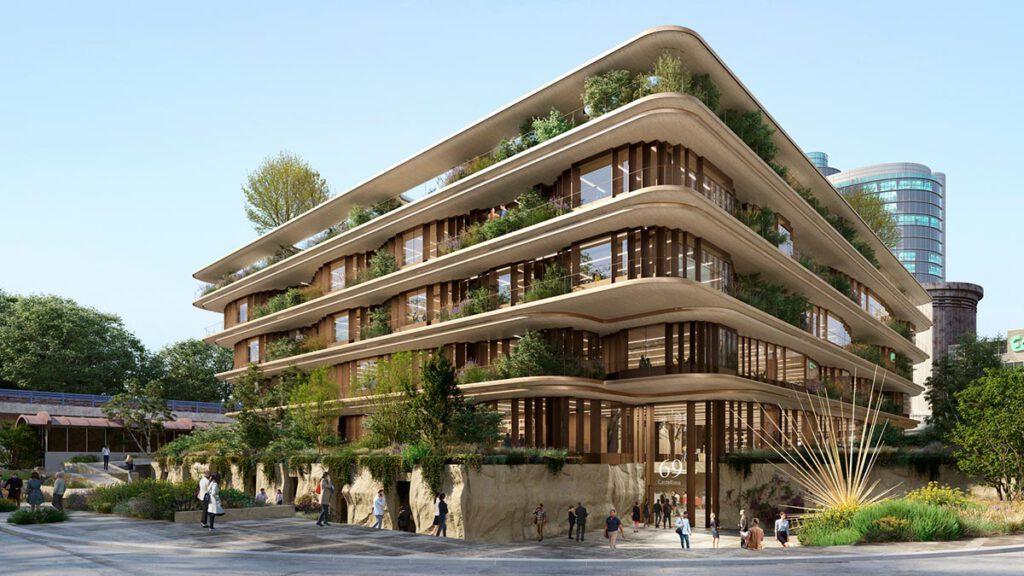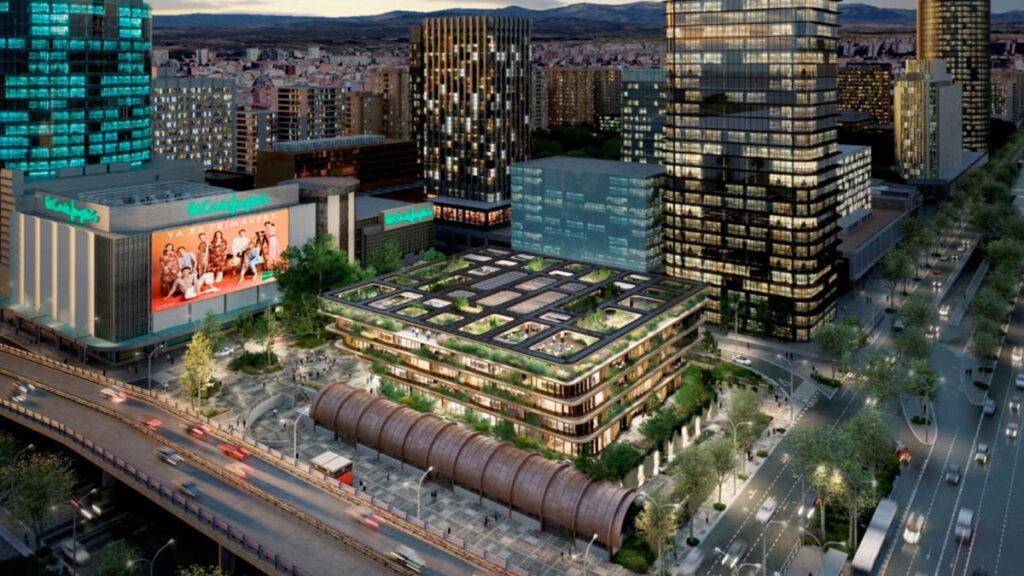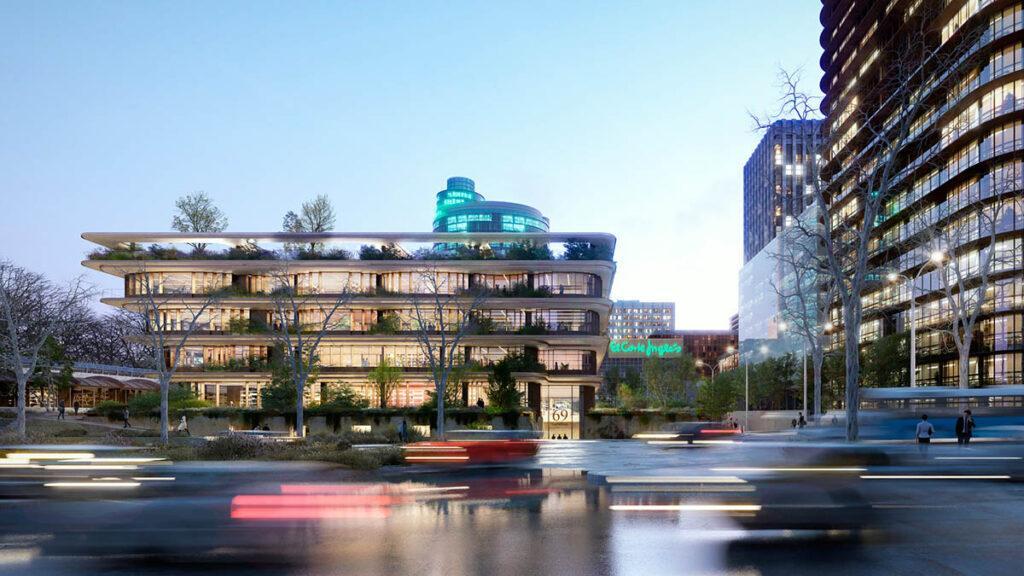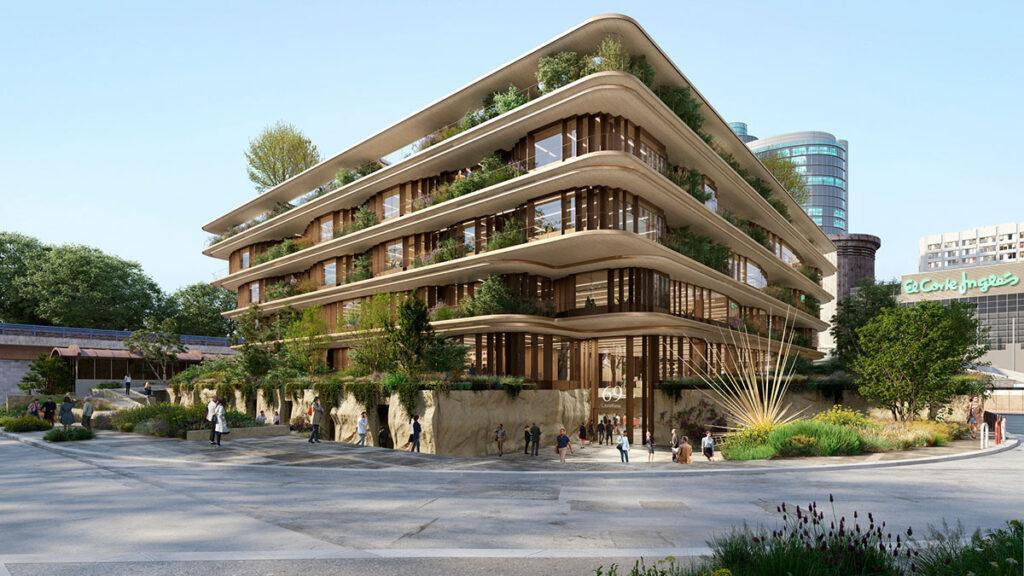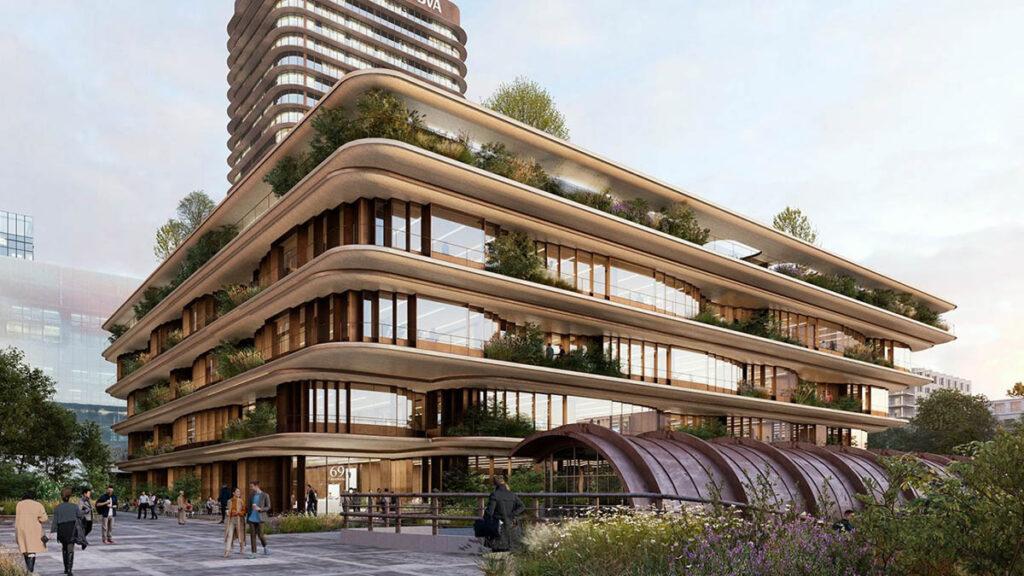From hamster wheel to perpetual motion
An office building is being constructed in Madrid that even does some work itself: generating solar power. More power than it actually needs.
We all know that perpetual motion is a myth. After all, no device or system is capable of going on forever once it is set in motion. This is because a closed system invariably uses more energy than it can generate itself. A little energy always falls by the wayside.
But what if you could keep adding new energy that is automatically produced? Then, at least in a metaphorical sense, you could claim to have invented a perpetual motion machine …
Where the sun always shines
Getting to the point, by 2024 there will be an innovative office building in Madrid that generates more energy than it uses, and it will do this every day. Electricity is simply produced constantly – green electricity, needless to say. The enviable 7.5 hours of sunshine that Madrid enjoys on average per day will be harvested by means of state-of-the-art photovoltaic panels.
And the latest modules are so efficient that, when combined with the plentiful sunshine, the quantity of electricity produced will power even a modern office building. And more besides. Experts believe that Heatherwick Studio’s Castellana 69 project will be able to feed as much as 30% surplus energy into the Spanish national power grid. Because it quite literally has too much of a good thing.
But let’s take a quick look at the story behind this unusual building project. London-based Heatherwick Studio won the competition to design an office building that would grace the last undeveloped plot of land in Madrid’s financial and business hub. This is the first project that the British firm has undertaken in Spain. Under the name Castellana 69, the brief was not merely to design a functional office but rather one that projects a strong sense of ecological responsibility.
Social and ecological sustainability
This has been captured impressively by designer Thomas Alexander Heatherwick and his team of architects. And the aforementioned surplus solar power is only the tip of the iceberg as regards the building’s sustainable design. But all in good time. First and foremost, Heatherwick wanted to find a way to “humanize” the workspaces.
To quote Heatherwick: “Castellana 69 is an exciting opportunity to move away from the formality and staleness of so much modern office building design to develop a more humanized workspace that simultaneously prioritizes social and environmental sustainability.”
And so the project team was briefed to “create a stimulating environment and provide organizational flexibility that responds to society’s demands for new working patterns”. One that doesn’t make people feel like they’re stuck in a never-ending hamster wheel. Surprisingly enough, it was this decision at the outset that effectively paved the way for the sustainable office.
Sustainability follows design
This is because the design derived from this vision makes use of the mild local climate to create seamless transitions between inside and outside spaces. In other words, it tries to generate an ideal environment in all areas as naturally as possible. This alone is enough to reduce the usual energy used up through excessive heating or cooling.
More greenery, less energy
In addition, the design of the 15,000 m² property includes a courtyard that is bursting with plants. With this “green heart” of Castellana 69, the aim is to put nature centre stage in both the workplace and the city. The architects have even covered most of the walls in greenery, which will also have a twofold effect. Firstly, the office workers will be glad of the shade in the hot summer months. And secondly, it will stop the building itself from heating up so intensively, effectively reducing the need for air conditioning.
However, in addition to the carbon produced during working hours, the project team is focusing on the environmental impact of the construction itself. During the building process, the engineers are aiming to emit between 60% and 70% less carbon than is usual for a typical office building of this size. After all, the architects promised that the client would be able to class the building as climate-neutral within 15 years of completion.
So is it perpetual motion?
And now we come back once again to the photovoltaic panels that produce more electricity than needed. In the long term, this CO2-free energy surplus is offset against the CO2 that is inevitably produced through any kind of construction work. In other words, a kilogram of CO2 avoided by using solar power offsets another kilogram generated during building.
More than climate-neutral
This first step leads to climate neutrality. And then even paves the way for a negative carbon footprint. Because the building will continue producing more electricity than it needs for at least another 15 years.
So does anyone still think perpetual motion is a myth …?😜
Text: Johannes Stühlinger
Translation: Rosemary Bridger-Lippe
Images: Heatherwick Studio
